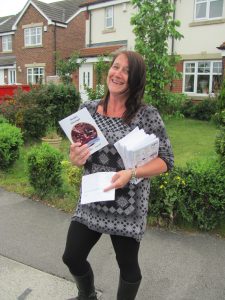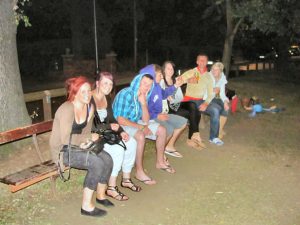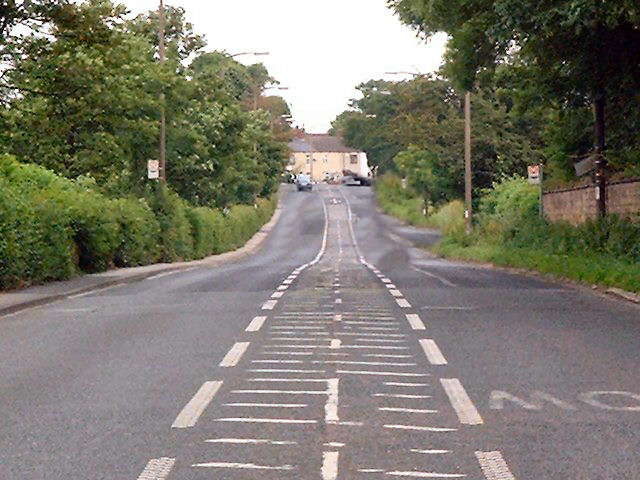25th July, 2014 and the Radio Leeds researcher has got me standing by for a phone interview with Wes on the Wes Butters Mid Morning show.
After responding as to who famous visited Methley and delivering a too small bit about the church and the public houses, I suspect I got guillotined before getting on to the more vital aspects of the village.
My pre-prepared aide memoire of some two pages was not brought into use, therefore I am putting this condensed version together for the benefit of posterity:-
The physical siting of the village largely between the two rivers could be described as semi-rural with a widely dispersed population. The larger residential area of Mickletown surrounded by a number of smaller satellite hamlets indicates a concentric inner demesne situated within the larger village. (claimed by some to be the second largest village in Yorkshire)
The village has historically experienced connections at large with the two river/canal systems providing both bulk transport for coal, sand and petroleum and more recently leisure facilities. Also going back Methley was a meeting place for three railway systems and at one time could boast three rail stations – imagine that!.
Strong links with the past have been well recorded – it was of significant importance in mediaeval times with influential manorial lords playing roles in both local and greater spheres.
Famous people attracted to the village were Sir Titus Salt who resided at Methley Hall for some ten Years, also Henry Moore visiting his relatives, it is claimed he was additionally inspired to sculpting after seeing and sketching the sculptures and corbels in St Oswald’s church. The famous composer, Sir Edward Elgar was a regular visitor to the Embletons at their home – the Cedars, where musical evenings were part of the entertainment, just imagine the composer of that wonderful piece Nimrod.  The church, without doubt is the best place to observe stages of village history over the last 700 years.
The church, without doubt is the best place to observe stages of village history over the last 700 years.
Methley has long experienced industrial processes, primarily with coal mining. At one time there were three pits in the vicinity and a number of smaller pits going back in time. On top of this the village has had to tolerate opencast mining right up to recent times. Thankfully, restoration works have been undertaken and more is still to be carried out, adding to the well established walks within and around Methley. It is now possible to walk from the centre of Leeds along the riverbank to reach Methley and then bus it back after taking refreshment. Or the converse.
Sand and gravel extraction, a more recent source of industry has also ceased and restoration here has provided villagers and visitors with additional leisure pursuits.
Industry now rests with agriculture (going back to it’s village roots) here the farming system has been much rationalised and the producers largely rely on crop cultivation.
The village community, despite the number of pub closures continues to be pro-active. A long established cricket club, who in more recent times have enjoyed success, have been equally successful with the promotion of junior cricket – this club has benefited from a great many volunteers over the years. Mind, few places can match the attraction of the churchside setting for the cricket field and bowling green.
The scope for sport has been extended where additional land has been made available for both Junior Rugby League and the newly formed Methley United AFC Juniors. Once again both sports prospering from the input of organisers and facilitators encouraging youngsters to take part.
Likewise, the open age Rugby League Club – The Royals continue to excel and prosper in their new found location off Savile Road.
I should add that the WMC and the Ex Servicemen’s Club continue to buck the trend of licensed premises – the WMC benefiting from a new build and the Ex Servicemen’s club prospering from the input of a dedicated team of committee men and women.
Perhaps of equal importance, the village has many group organisations/associations – certainly through the church and especially the chapel after its new makeover which applies to a wider range of the population. Other notable contributors to village vitality are:-
Production of the Methley Messenger – a monthly magazine widely sourced and widely read, a credit to it’s amateur publishers.
Could not miss mentioning the Archive Group who are collating and presenting aspects of the history of Methley in picture and document form.
No less the small, but active team who manage the Methley in Bloom project. Not content with obtaining tubs, plants and watering facilities for floral displays, they also go to great lengths to secure funding in order to provide materials.
The greater part of the fundraising is generated by their successful June Scarecrow Festival, which is by now a bigger operation than the displays – however they are all highly valued.
Perhaps the now outstanding tour de force is the bi-annual Methley Festival which has been restored in recent years incorporating input from many of the aforementioned and other groups. This one takes some organisation and is a credit to the people involved, providing pleasure for young and old, villagers and visitors alike.
All this, adding to the contribution of village life will leave you in no doubt that the place is alive and well confirming the view that Methley has a healthy share of vitality where and when it matters.
If you should wish to delve a bit further into the location, then you could do no worse than read this website in depth www.methley-village.co.uk which will confirm this and more.